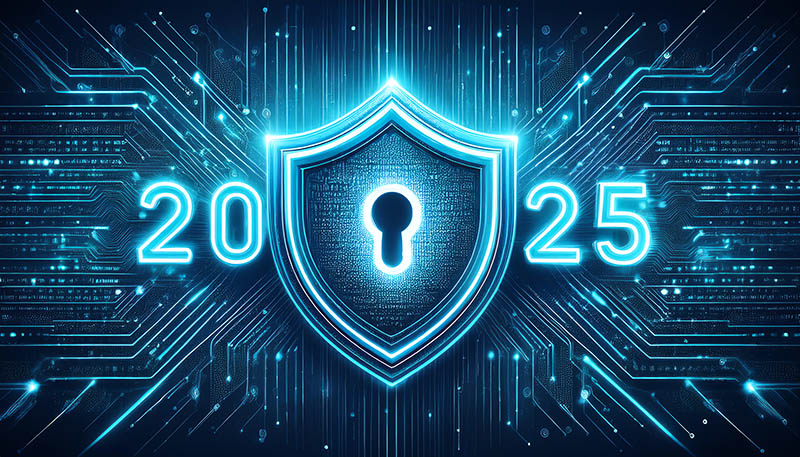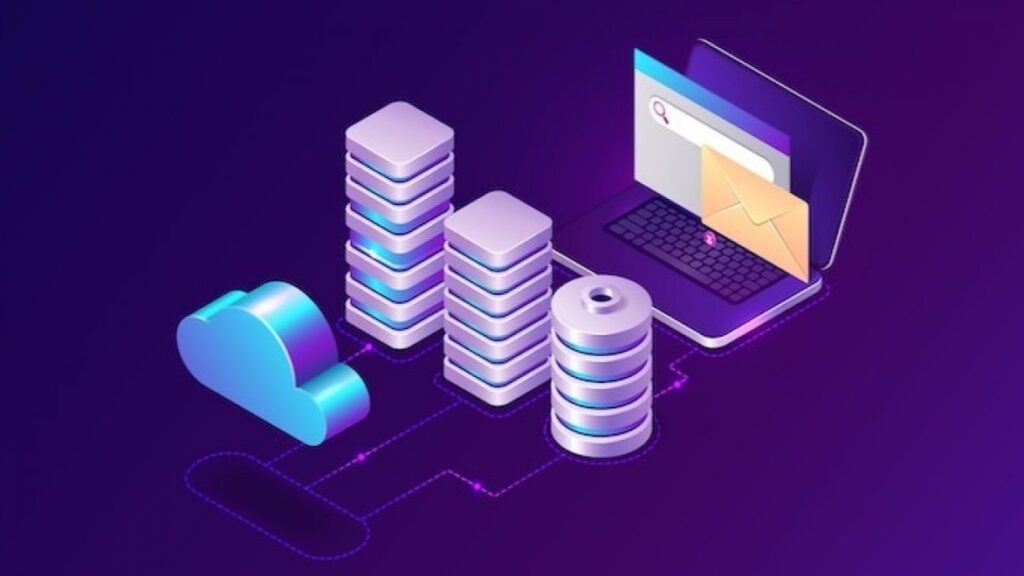The battlefield of cybersecurity has fundamentally changed. While traditional antivirus solutions play defense by hunting for known malware signatures, ransomware attackers have evolved far beyond these conventional tripwires. Today’s cybercriminals deploy sophisticated encryption attacks that can morph, adapt, and slip past signature-based defenses with alarming ease.
The sobering reality? Recent research reveals that 80% of ransomware attacks now leverage artificial intelligence to enhance their effectiveness—from generating convincing phishing campaigns to identifying system vulnerabilities at machine speed. When attackers weaponize AI, defenders need to fight fire with fire.
This is where AI-powered backup solutions enter the arena, transforming data protection from a reactive last resort into a proactive shield. At MicroBackups, we’ve harnessed machine learning to detect ransomware threats before they can encrypt your Google Workspace or Microsoft 365 data—often within 60 seconds of suspicious activity.
But how does AI actually stop ransomware? Let’s pull back the curtain on the technology that’s revolutionizing data protection.
The Fundamental Problem with Traditional Defenses
Traditional ransomware protection operates on a simple principle: identify known threats and block them. Antivirus software maintains massive databases of malware signatures—digital fingerprints of previously identified threats. When a file matches a known signature, it gets quarantined.
This approach worked reasonably well when ransomware variants were relatively static. However, modern ransomware has become a shapeshifter. Attackers now deploy polymorphic malware that changes its code structure with each infection, format-preserving encryption that disguises infected files as normal documents, and zero-day exploits that have never been seen before.
Consider this: by the time a new ransomware variant is identified, added to signature databases, and distributed to security systems worldwide, thousands of organizations may already be infected. You’re essentially installing locks after the burglar has left the building.
The signature-based approach suffers from three critical weaknesses:
Reactive by Nature: It can only detect threats that have already been cataloged, leaving you vulnerable to new attack variants.
High False Positive Rates: Overly aggressive signature matching flags legitimate files as threats, creating alert fatigue among IT teams.
No Behavioral Context: A file might have a clean signature but exhibit malicious behavior once executed—signature scanning can’t predict what software will do, only what it looks like.
This is precisely why organizations need defenses that understand behavior, not just signatures. Enter artificial intelligence.
How AI Learns to Recognize Ransomware Behavior
Unlike signature-based systems that look for exact matches, AI-powered ransomware detection learns what ransomware does. Think of it as the difference between recognizing a criminal’s face versus recognizing criminal behavior—the latter is far more effective when dealing with sophisticated threats that constantly change their appearance.
Machine learning models are trained on millions of real-world ransomware samples, learning to identify the telltale patterns of malicious activity. These patterns include:
Mass File Encryption: Ransomware needs to encrypt files rapidly to be effective. AI models detect when an unusually high number of files are being modified in quick succession—a hallmark behavior of encryption attacks.
File Entropy Changes: When ransomware encrypts a document, it transforms structured data into randomized, high-entropy noise. Machine learning algorithms can measure these entropy shifts and flag suspicious transformations that traditional systems would miss.
Access Pattern Anomalies: Ransomware often accesses files in unusual sequences or locations. AI can establish baseline behavior for how your organization normally interacts with data, then identify deviations that suggest compromise.
System Resource Spikes: Encryption is computationally expensive. AI monitors CPU, memory, and disk I/O patterns to detect the resource signatures consistent with mass encryption operations.
The sophistication extends beyond simple pattern matching. Advanced AI systems employ multiple machine learning techniques in concert. Autoencoders detect anomalies by learning what “normal” file behavior looks like, isolated forests identify outliers in system activity, and random forests classify threats based on multiple decision criteria simultaneously.
Recent research demonstrates that these AI approaches achieve detection accuracy rates exceeding 94%, with dramatically fewer false positives than traditional methods. More importantly, they can identify never-before-seen ransomware variants—including those that use format-preserving encryption and entropy manipulation to evade conventional detection.
The Speed Advantage: Detection in Under 60 Seconds
Perhaps the most critical advantage of AI-powered ransomware detection is speed. In a ransomware attack, every second counts. The longer malware remains undetected, the more files get encrypted, the further it spreads across your network, and the more damage it inflicts.
Modern AI systems can detect ransomware anomalies in less than 60 seconds from the moment suspicious activity begins. This isn’t just impressive from a technical standpoint—it’s the difference between recovering a handful of files and losing your entire data repository.
Here’s how the detection timeline works in practice:
When ransomware begins encrypting files on a compromised device, AI monitoring systems immediately notice the unusual patterns. Within seconds, machine learning models analyze file access patterns, entropy changes, and system behavior. The system compares this activity against millions of known attack signatures and behavioral baselines. When the confidence threshold for a ransomware attack is exceeded, the system triggers an automated response—typically stopping file synchronization to prevent the infection from spreading to cloud backups.
This rapid response creates what security professionals call a “protective bubble” around your data. By halting sync operations immediately, the AI prevents ransomware from corrupting your cloud-stored files, even if local devices are fully compromised.
Compare this to traditional detection methods, which often take hours or even days to identify an attack—usually after the damage is already done. By the time human administrators notice unusual activity, investigate the cause, and take remediation steps, ransomware has often encrypted thousands of files and spread to multiple systems.
AI doesn’t sleep, doesn’t take breaks, and doesn’t suffer from alert fatigue. It continuously monitors every file operation, every sync event, and every access pattern with tireless vigilance—and responds at machine speed when threats emerge.
Real-World Application: AI in Cloud Backup Protection
Understanding the theory behind AI ransomware detection is one thing. Seeing how it protects your actual business data is another.
At MicroBackups, AI-powered protection works as an intelligent safety layer between your organization’s devices and your cloud-stored data in Google Workspace and Microsoft 365. Here’s how it protects you in a real attack scenario:
An employee clicks a phishing link and unknowingly downloads ransomware to their laptop. The malware activates and begins encrypting local files. Traditional antivirus might miss this new variant because it uses techniques designed to evade signature detection. Within seconds of the encryption beginning, MicroBackups’ AI monitoring detects the suspicious patterns—high-speed file modifications, entropy changes, and unusual access behaviors.
The system automatically pauses file synchronization from the compromised device to the cloud, preventing encrypted files from overwriting your clean backups. The user immediately receives alerts via desktop notification and email, informing them of the detected ransomware activity. IT administrators are simultaneously notified, allowing them to isolate the compromised device and begin remediation.
Because synchronization was halted instantly, your cloud backups remain completely intact and uncorrupted. Once the infected device is cleaned, users can easily restore their files from the protected backup repository—typically with just a few clicks.
This protective approach represents a fundamental shift in backup philosophy. Rather than simply storing copies of your data and hoping they don’t get corrupted, AI-powered backups actively defend your data in real-time. The backup system isn’t just a passive storage vault—it’s an active guardian that recognizes threats and takes autonomous action to protect your information assets.
The AI continuously learns and adapts as well. Every attack it analyzes contributes to its understanding of ransomware behavior, making it more effective at detecting future threats. This adaptive learning means your protection grows stronger over time, even as attackers develop new techniques.
Beyond Detection: Predictive Intelligence and Recovery
The most advanced AI backup systems don’t just detect attacks in progress—they predict them before they happen and streamline recovery when prevention fails.
Predictive algorithms analyze patterns across your entire organization to identify potential vulnerabilities. This might include detecting unusual user behavior that suggests account compromise, identifying systems with outdated security patches that attackers commonly exploit, or recognizing network traffic patterns consistent with reconnaissance activities that precede ransomware deployment.
This predictive capability allows IT teams to take preemptive action, closing security gaps before attackers can exploit them. It’s the cybersecurity equivalent of weather forecasting—giving you advance warning to batten down the hatches before the storm arrives.
When attacks do succeed despite preventive measures, AI dramatically accelerates recovery. Intelligent restoration tools can automatically identify which files were affected, determine the optimal restore point before corruption occurred, and execute bulk recovery operations without requiring manual intervention.
Advanced systems can even analyze the attack’s impact across your entire data environment, providing clear visibility into what was compromised, what remains secure, and what actions are needed to fully remediate the incident. This crystal-clear visibility eliminates the confusion and uncertainty that typically plague ransomware recovery efforts.
The Arms Race: Fighting AI with AI
The uncomfortable truth is that cybercriminals aren’t standing still. Attackers are actively incorporating AI into their own toolkits, using machine learning to identify vulnerabilities, generate convincing phishing content, and even create ransomware variants that adapt to evade detection.
Some security experts predict that AI-powered “Ransomware-as-a-Service” platforms will soon make sophisticated attacks accessible to even novice criminals, dramatically expanding the threat landscape. Attackers are already using AI to conduct highly personalized social engineering, generate deepfake voice calls impersonating executives, and bypass traditional security measures with alarming efficiency.
This means the only effective defense is AI-powered security that can match—and exceed—the sophistication of AI-powered attacks. Traditional security tools simply cannot analyze data fast enough, recognize patterns quickly enough, or adapt rapidly enough to counter AI-enhanced threats.
The organizations that will successfully defend against tomorrow’s ransomware attacks are those investing in AI-powered protection today. This isn’t about adopting new technology for its own sake—it’s about matching your defensive capabilities to the evolving threat landscape.
What This Means for Your Organization
For IT managers, CISOs, and business leaders, the message is clear: ransomware protection can no longer rely solely on signature-based antivirus and reactive incident response. The threat has evolved beyond these traditional defenses.
AI-powered backup and security solutions provide three critical advantages:
Proactive Defense: Detecting and stopping threats before they can encrypt your data, rather than discovering attacks after the damage is done.
Speed and Scale: Monitoring every file operation across your entire data environment and responding to threats in under a minute—something no human security team can match.
Adaptive Learning: Continuously improving detection capabilities as new attack techniques emerge, ensuring your protection evolves alongside the threat landscape.
For organizations using Google Workspace or Microsoft 365, AI-powered backup protection offers an essential safety layer that cloud platforms alone cannot provide. While Google and Microsoft have native security features, they weren’t designed to protect against sophisticated ransomware attacks that compromise user credentials or exploit sync mechanisms.
This is where solutions like MicroBackups create a critical defensive perimeter—combining enterprise-grade AI threat detection with comprehensive backup coverage to ensure your data remains safe, accessible, and recoverable no matter what threats emerge.
The Future of Data Protection
As ransomware attacks grow more sophisticated and AI-enhanced threats become the norm rather than the exception, the organizations that thrive will be those that embrace intelligent, adaptive security measures.
AI-powered ransomware detection isn’t science fiction or future technology—it’s here now, protecting organizations worldwide from the most advanced threats cybercriminals can deploy. The question isn’t whether AI will play a central role in data protection—it’s whether your organization will adopt these technologies before the next attack strikes.
Because when ransomware comes for your data—and statistics suggest it’s a matter of when, not if—you’ll want every possible advantage on your side. An AI guardian that never sleeps, learns from every threat, and responds at machine speed might be the difference between a minor security incident and a catastrophic data loss event that cripples your business.
The arms race between attackers and defenders continues to escalate. The winning strategy is clear: fight AI with AI, detect threats before they strike, and ensure your data protection is as intelligent as the threats trying to compromise it.
Ready to see AI-powered ransomware protection in action? Discover how MicroBackups delivers intelligent threat detection, automated defense, and seamless recovery for Google Workspace and Microsoft 365. Learn more about our AI-powered backup solutions or schedule a demo to see how we protect organizations like yours from evolving ransomware threats.



